Why prospective parents decide to choose the sex of their future babies
Snips and snails, and puppy dogs tails,
That’s what little boys are made of.
Sugar and spice and all things nice,
That’s what little girls are made of.
Many people think this favorite nursery rhyme presents the perfect contrasting descriptions of little boys and girls. Clinically, however, a baby girl starts as an embryo with two ‘x’ chromosomes while an infant boy has one ‘y’ and one ‘x’ chromosomes. Mother nature does not need snails, dog tails, sugar, or spice to create these miracles.
Despite old wives’ tales predicting a baby’s sex by looking at pregnancy bumps, couples, until recently, did not have a reliable way of learning about their bundles of joy until the arrival of advanced testing like ultrasounds and amniocenteses. They had to wait until the delivery room to learn if they had a son or daughter.
Though most of our patients at HRC Fertility would be happy with a healthy infant of either sex, some have preferences for a son or a daughter or one or two children of each gender. Parents-to-be may not even realize they have an affinity for a specific gender until they have an option to choose. Reproductive medicine can give intended parents the ability to pick the sex of their children if they produce sufficient healthy embryos of the gender they prefer.
Common Reasons for Family Balancing with Sex Selection
Some common reasons prospective parents prefer to ‘balance’ their families via gender selection are:
- They have several children of one gender but want their next child or children to be of the opposite one
- They belong to various cultures and religions favoring males as the first-born and prioritize this distinction
- They are parents who tragically have lost a child and want their next child to be the same gender
- They are older and know their time to have a baby is limited, so they desire to have control over the preferred gender
Their best option is to pursue in vitro fertilization with preimplantation genetic screening (PGS) for sex selection. PGS combined with preimplantation genetic diagnosis (PGD) can detect chromosomal abnormalities due to aging or which cause recurrent pregnancy loss, sex-based inherited genetic disorders, and genetically-based chromosomal anomalies.
The Gender Selection Treatment Process
Though parents seeking family-balancing services usually do not have fertility problems, they will need to experience the same protocols and treatments as women and men with infertility challenges.
Women will undergo ovarian stimulation with fertility medications to produce multiples ovarian follicles. During this medication phase, we will carefully monitor them with ultrasounds and blood work to determine the optimal time for ovulation.
One of our infertility physicians will extract these eggs using ultrasound guidance during the egg retrieval. Then our laboratory will fertilize the eggs with the father’s sperm and let the embryos grow to the 200-cell blastocyst stage of development on day five or six.
The embryologist will remove a few cells from the trophectoderm, the outer layer of the embryo, to send to a specialized laboratory to test the them for chromosomal abnormalities, gender and also for specific genetic diseases, if necessary.
The removed cells would have become part of the placenta, but are not necessary for the further growth of the embryos and health of the future baby. The laboratory will freeze the embryos until we learn the results and save them for a subsequent frozen embryo transfer.
We will select the highest quality, chromosomally normal euploid embryos for future transfers as well as storage. For intended parents who want a baby of a particular gender, we will choose the appropriate high-quality embryos if they are available.
Gender Selection after IVF and PGS
Many of our IVF patients choose genetic screening to ensure they will transfer the most viable embryos to give them a higher probability of pregnancy success. Consequently, they can learn the gender of their embryos to have the option of creating the family they envision.
Preventing Inherited Gender-Based Diseases with IVF
Some inherited genetic diseases are sex-linked and carried on the sex chromosome that determines the child’s gender. Males are at risk if they inherit an x chromosome with a recessive gene disorder because y chromosomes do not contain the same genes and do not protect them from the disease.
Parents will want to select a female embryo to prevent transmitting x-linked recessive conditions, such as Duchenne muscular dystrophy or hemophilia, affecting males. Conversely, the doctor would transfer a male embryo if there is a concern about Fragile X syndrome when all or part of the X chromosome is missing.
There are hundreds of genetic diseases where the sex chromosome is involved in either a recessive or dominant way. Many are very rare, but parents may be aware they are carriers through genetic testing or if they have given birth to a child affected by the disorder.
Gender selection is legal in the United States
Gender selection is not legal everywhere, including in Australia, Canada, the United Kingdom, and China. Fertility tourists from these countries and others can visit California to take advantage of accessing this service here without the restrictions imposed in other nations.
The main reasons HRC Fertility patients choose gender selection are either to create the family of their dreams with the gender they want or to prevent a child of either sex from suffering from a gender-linked medical condition. Gender selection is a bonus for many of our patients who already are using PGS to find the most viable embryos to transfer. All reasons to utilize gender selection, including non-medical ones, are valid to the parents who use it to build their families.

